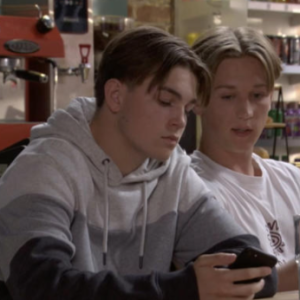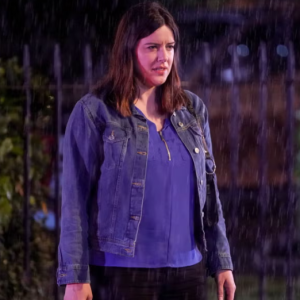The iconic BBC Elstree Centre, the hallowed ground where the drama of Walford unfolds, has recently become a point of contention for fervent EastEnders fans. Hopes of spontaneous meet-and-greets and candid selfies with beloved cast members were dashed this summer, leaving many superfans disappointed. Visitors arriving at the studio gates, eager to catch a glimpse of their favourite stars, quickly discovered that such interactions were strictly prohibited. This restriction, while not new, often catches fans by surprise, leading to understandable frustration, especially during peak holiday periods when fan traffic is highest.
The reasons behind these stringent measures are rooted in practicality and safety. The studio entrance is situated on a public residential road, and long-standing guidance has been in place to prevent vehicles from stopping outside the gates. This rule is crucial for maintaining clear access, avoiding road blockages, and most importantly, ensuring the safety of both local residents and individuals entering and exiting the premises. The narrow layout of the residential roads surrounding the studios means that even a brief pause by a vehicle could cause significant disruption or pose an accident risk. As an insider explained, “The safety of everyone coming in and out of the premises is paramount.” Fans, often arriving with high hopes, only realise the extent of these rules once they are physically present, contributing to the sense of dashed expectations.
The situation was further amplified during the show’s landmark 40th anniversary celebrations earlier this year. With live episodes and high-profile events drawing unprecedented attention, security at the Elstree Centre was significantly heightened. Police Community Support Officers (PCSOs) and security guards worked collaboratively to manage crowds, ensuring public order and the safety of all present. While the gatherings were generally peaceful, the sheer scale of interest necessitated careful crowd control, reinforcing the need for strict adherence to the no-stopping policy at the gates.

Yet, despite the physical barriers separating fans from the cast at the studio gates, the 40th anniversary has delivered an unparalleled wave of excitement on-screen. The milestone year has been marked by a carefully curated series of iconic character returns, designed to evoke nostalgia while propelling new, compelling storylines. The reappearance of beloved figures has been a cornerstone of the anniversary celebrations, reminding viewers of Walford’s rich history and enduring appeal.
Among the highly anticipated comebacks, Tracy-Ann Oberman reprised her role as Chrissie Watts, nearly two decades after her character’s dramatic departure. Chrissie’s return immediately reignited memories of her infamous involvement in the murder of Den Watts, a pivotal moment in the show’s history, promising fresh revelations and potential for new alliances or confrontations. Paul Bradley, who played the kind-hearted Nigel Bates, also returned after a 25-year absence, much to the delight of long-term fans who remember his loyal friendship with Arthur Fowler and his gentle nature, a stark contrast to some of Walford’s more volatile residents.
Michael French made a much-welcomed return as David Wicks, a character last seen two decades ago. David, known for his charismatic yet troubled persona and his tumultuous relationship with Carol Jackson, brings with him a legacy of complicated family dynamics and romantic entanglements that could easily unravel current storylines. Patsy Palmer’s iconic Bianca Jackson, a character synonymous with Walford’s feisty spirit and memorable “RICKY!” shouts, made a comeback in 2019, but her continued presence or renewed involvement during the anniversary year only underscores her enduring popularity and importance to the show’s fabric. Ricky Groves also returned as Garry Hobbs, last seen in 2009, and Cliff Parisi as Minty Peterson, whose last appearance was in 2010. These characters, though perhaps less central in their initial runs, represent a beloved era of EastEnders, and their returns provide opportunities for heartwarming reunions and comedic relief, alongside potential new narrative directions.

Perhaps the most electrifying return was that of Ross Kemp as the formidable Grant Mitchell, a role he first originated in 1990. Grant’s powerful, often volatile presence has been a defining characteristic of the Mitchell family saga. His return was described as “explosive,” a promise that hints at significant upheavals for the Mitchell clan and potentially wider ramifications for the entire Square. Such a character’s reintroduction is not merely for fan service; it invariably serves as a catalyst for high-stakes drama, revisiting old wounds, challenging existing power structures, and forcing other long-standing characters to confront their pasts.
Beyond the star-studded comebacks, the 40th anniversary has delivered a host of other dramatic events to keep audiences enthralled. A fan-favourite wedding, often a recipe for disaster or unexpected twists in Walford, played out with all the usual emotional intensity. A massive Queen Vic explosion, a classic soap opera trope used to signify seismic shifts and character-altering events, undoubtedly left viewers on the edge of their seats, forever changing the landscape of Walford’s most iconic pub. Additionally, a live interactive episode allowed viewers an unprecedented level of engagement, a testament to the show’s continuous efforts to innovate and connect with its audience in the digital age.
The enduring appeal of EastEnders lies in its ability to mirror and amplify real-life experiences, tackling complex social issues with unflinching honesty, all wrapped within the familiar, often claustrophobic, setting of Albert Square. For four decades, it has served as a cultural touchstone, portraying multi-generational family sagas, intense rivalries, deep-seated friendships, and the everyday struggles of working-class Londoners. The continuous interplay between light and dark, hope and despair, resilience and vulnerability, ensures that Walford remains a microcosm of British society, resonating deeply with millions.

While the physical proximity to the cast remains restricted, EastEnders has masterfully leveraged its anniversary to strengthen the bond with its audience through its narrative strength. The ongoing drama, the carefully orchestrated nostalgia of returning legends, and the introduction of fresh, compelling storylines ensure that the show remains vibrant and relevant. Viewers can fully immerse themselves in the unfolding sagas from the comfort of their homes, experiencing the full spectrum of Walford’s biggest moments without needing to brave the studio gates. The combination of classic characters interwoven with contemporary narratives, coupled with the show’s consistent ability to deliver explosive plot twists, guarantees that EastEnders continues to engage its dedicated audience and secure its place as a cornerstone of British television for years to come. The disappointment at Elstree is a small price to pay for the continuous on-screen spectacle that has defined four decades of a national treasure.





